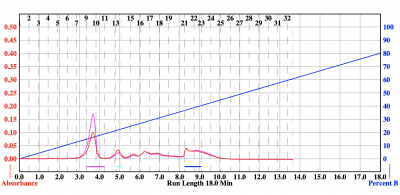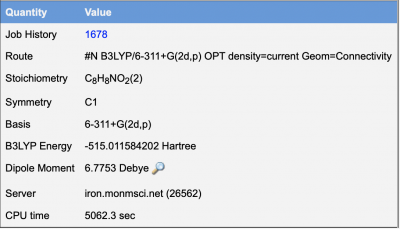Acetaminophen Project
Introduction
Acetaminophen(APAP) is an active ingredient in many over-the-counter and prescription painkillers, such as Tylenol and Oxycodone. APAP is also responsible for approximately 50% of the cases of acute liver-failure in the United States and Great Britain(1). Treatments for acetaminophen-induced liver injury(AILI) are limited. The current mechanism for AILI is the production of hepatotoxic NAPQI as a metabolite in an enzymatic, two-electron oxidation(1). However, evidence also supports a one electron oxidation(2). In an effort to reduce the mortality rate of acetaminophen overdose, we are investigating the identity of single-electron, oxidation products and their bioactivity as an alternative mechanism for AILI. Currently, there is no effective treatment for AILI. The first step towards achieving this would be to definitively determine the mechanism of acetaminophen metabolite toxicity.
Therapeutic doses in adults range from 1-4 g/day. The minimum lethal dose is 5-15 g, with acute lethal doses ranging from 13-25 g [3]. An Acetaminophen dose of 150 mg/kg causes liver injury. Peak plasma concentrations are seen within 2 hours of ingestion. The half-life is usually 1-3 hours. The metabolites of Acetaminophen stayed in the body from 4-5 hours[4]. Hepatotoxicity usually develops 24-36 hours after ingestion, whereas renal insufficiency may develop 2 to 4 days after toxic ingestion [5].
Acetaminophen is absorbed from the gastrointestinal tract and exhibits dose-dependent kinetics (first order). Plasma protein binding for Acetaminophen is between 20 and 50%, and passage of the blood-brain barrier is restricted. Elimination of the metabolized drug is though the kidney [6,7].
In order to determine the identities and properties of the single electron oxidation products, it is necessary to first synthesize them. The single electron oxidation can be accomplished by using a system of horseradish peroxidase (HRP) and hydrogen peroxide. HRP carries out two, single-electron oxidations of the substrate, APAP in this case. In regard, to acetaminophen the oxidation most likely will take place at the hydroxyl group of the phenol. The single electron oxidations result in the formation of a reactive radical intermediate which can move exist in several different resonance structures.
Metabolism and Excretion
About 90% of acetaminophen is biotransformed by cytochrome P-450 in the liver. Main metabolites are sulphate (about 52%) and glucuronide (about 42%) conjugates. About 4% of the drug is biotransformed to N-acetyl-p-benzoquinoneimine (NAPQI), which is a highly reactive cytotoxic intermediate. NAPQI is detoxified by conjugation with glutathione and excreted in the urine as cysteine and mercapturic acid [6,7].
Excretion
90-100% of an ingested dose is excreted in urine during about 24 h [7]. At therapeutic dosage, acetaminophen is excreted as glucuronide (45-55%), sulfate (20- 30%), and cysteine (15-55%). Approximately 2 % of acetaminophen is excreted unchanged [8].
Toxicological Mechanism
At the overdose of acetaminophen, glutathione is depleted by binding to NAPQI. When glutathione is depleted 70% or more, NAPQI can no longer be detoxified by that pathway, and the excess of NAPQI binds covalently to cellular protein macromolecules in the liver, causing cell death and hepatic necrosis [9].
Treatment for Acetaminophen Overdose
Administration of N-acetylcysteine (NAC) (<8 hours after ingestion) is crucial for decreasing the risk of hepatotoxicity. It is thought to provide cysteine for glutathione synthesis and possibly to form an adduct directly with the toxic metabolite of acetaminophen, N-acetyl-p-benzoquinoneimine [10]. However, this has not been proven in vivo.
Materials and Methods
Acetaminophen Sample Prep
Early Acetaminophen Trial Sample Preparation
A 2 mM acetaminophen pH 5 stock solution was prepared in 100 mL of nanopure water. Stock solutions of Hydrogen peroxide (0.413 M), and HRP were created. The experimental solutions of acetaminophen (2 mM), H2)2 (0.25 M, 0.5 M, 1 M, and 2M), and ten uL of horseradish peroxidase was to each of a reaction vial.
Recent Acetaminophen Trial Sample Preparation
A 50 mM acetaminophen stock solution was prepared in 100 mL of nanopure water. Stock solutions of Hydrogen peroxide (0.413 M), and HRP were created. The APAP was added to a 1:1 water and dioxane solution. The experimental solutions of acetaminophen (50 mM), H2)2 (12.5mM), and ten uL of horseradish peroxidase was to each of a reaction vial. The resulting products were diluted by a factor of 10.
HPLC
Reverse phase high pressure liquid chromatography (HPLC) was performed on an Agilent Technologies 1100 Series instrument using a C18 column. The experimental method consisted of a 30-minute long run with mobile phase beginning at 100 percent acidified water to 100 percent 30% volume to volume acetonitrile. UV/Vis spectroscopy was used as a detector for absorbance at 270 nm..
EPR
Enzyme Immobilization
An immobilization of peroxidase from horseradish (HRP) was completed using Affi-Gel® 10. This procedure is centered around the isolectric point of the enzyme. The immobilization was completed using a MOPS buffer (pH 7.0) and about 1 mL of Affi-Gel® 10 beads.
Results
The Acetaminophen samples were ran at a wavelength of 263 nm because that is the lambda max for acetaminophen. Running the samples at this wavelength shows us how much absorption occurs at that wavelength.
HPLC
Flash Chromatography
EPR
Web MO/Gaussian
Web MO/Gaussian is a software containing various basis sets that allow for various levels of computational chemistry.
B3YLP/6-311+G(2d,p)
After running a calculation on Web MO/Gaussian, the following results were reported.
These were the constants used to generate the simulated ESR data above in WINSIM. These were found in the raw data output from the geometry optimization of the acetaminophen radical under "Isotropic Fermi Contact Couplings."
| Phenoxy (G) |
|---|
| 2.04 |
| 6.11 |
| 5.73 |
| 1.71 |
| 1.73 |
| 1.36 |
Discussion
Gepasi
We used the software "Gepasi" to analyze the kinetics of the reaction between horseradish peroxidase (HRP) and hydrogen peroxide. This program simulates how the compounds will react with each other. The following link describes how to use "Gepasi":
References
1.) Hinson, Jack A., Dean W. Roberts, and Laura P. James. "Mechanisms of Acetaminophen-Induced Liver Necrosis." Handbook of Experimental Pharmacology Adverse Drug Reactions (2009): 369-405. Web.
2.) Potter, David W., Dwight W. Miller, and Jack A. Hinson. "Identification of Acetaminophen Polymerization Products Catalyzed by Horseradish Peroxidase." Journal of Biological Chemistry 260.22 (1985): 12174-2180. Print
3.) Winek, C.L. (1994) Drug and chemical blood-level data. Winek’s Toxicological Annual, Pittsburgh. Allegheny County Department Laboratories.
4.) Slattery, JT, Wilson, JM, Kalhorn, TF, Nelson, SD. Dose-Dependent Pharmacokinetics of Acetaminophen: Evidence of Glutathione Depletion in Humans. Clin Pharmacol Ther 1987. Apr. 41(4): 413-8
5.) Poisindex, Thomson Micromedex (2005).
6.) Dollery, C. (1993) Therapeutic Drugs, Vol 1 & 2, , ed., London: Churchill Livingstone.
7.) Dart, R.C. ed. (2004) Medical Toxicology, 3rd ed., , Lippincott, Williams & Wilkins.
8.)Haddad, L.M. & Winchester, J.F. (1990) Clinical Management of Poisoningand Drug Overdose, 2nd edn., Philadelphia, PA, USA: W.B. Saunders.
9.) Casarett and Doull’s Toxicology (The Basic Science of Poisons), (1986) Klaassen, C.D., Amdur, M.O., Doull, J., eds., Macmillan Publishing Company.
10.) Lauterburg, B. H., Corcoran, G. B., & Mitchell, J. R. (1983). Mechanism of action of N-acetylcysteine in the protection against the hepatotoxicity of acetaminophen in rats in vivo. The Journal of clinical investigation, 71(4), 980–991. doi:10.1172/jci110853








